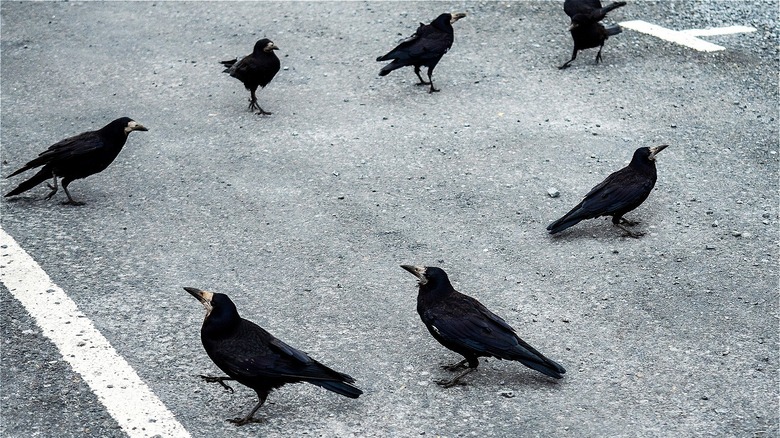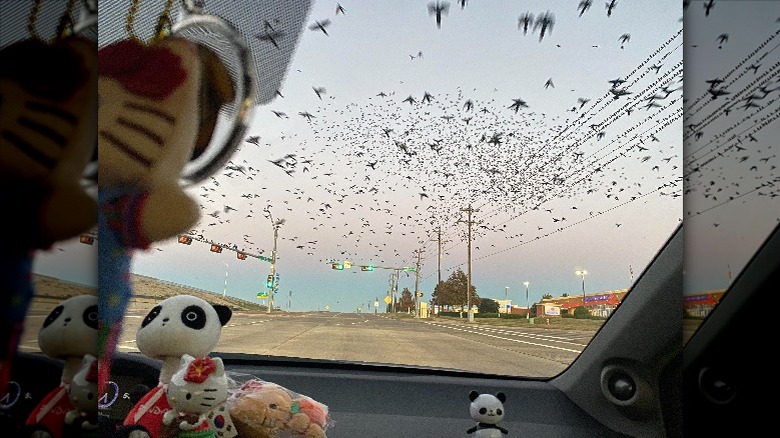The Reason Texas Supermarket Parking Lots Are Going To The Birds
In Texas, hordes of grackles gather in the wide-open parking lots of H-E-B and other grocery stores as darkness sets in. "They love French fries," Walter Wehtje, an ornithologist based in Fort Collins, told Austin's radio station KUT. After all, these massive plazas are usually good places to find scraps of food.
However, while French fries is an answer that's both funny and speaks to everyone who has had to battle off avian raiders, there's a bit more to it than the birds' desire for fast food. Human-grackle cohabitation began in Mexico, Wehtje explains, when the Aztecs kept the birds to cultivate their feathers. They allowed the grackles to flock around the city unharmed to ensure a continued supply, leading to the birds feeling comfortable in manmade environments even when they migrated northwards.
In addition to providing French fries, supermarkets offer increased visibility. Jessica Yorzinski with Texas A&M told KXAN Austin that the grackles also benefit from the artificial lighting in store parking lots, making them even more appealing. Moreover, parking lots are probably one of the few areas that combine both easy scavenging and the space to encompass the massive grackle flocks that roost together. There's strength in numbers, but numbers take space.
Texans react to grackles
It's all very well to note that over generations, grackles have evolved to find a second home in a Kroger's parking lot. But it's worth asking what the Texans find in them. For the most part, it seems folks are divided between frustration and fascination.
The picture above comes from the Dallas subreddit. Grackles cover the sky. "It begins," they write. Lower in the comments they explain that "Sometime around October-November, you start seeing these droves and boards of birds. They swarm." Stories bubbled too. One person was eating at Panera when they saw the swarm from across the road. They prayed for the birds to keep their distance. A second parked at Kroger despite the fecal matter such a plague produces. By the time they returned to their car, it had been covered. Moreover, the birds used the customer as a new target during the frantic throwing of bags into the back seat.
However, the grackle proves worthy of interest for more than nonchalant defecations. Jessica Yorzinski with Texas A&M described to KXAN Austin how grackles can "[move] each eye independently of the other," like a chameleon. Currently, they are the only birds known to have this capability. It also brings a new meaning to side-eyeing when they pass for a bombardment.

